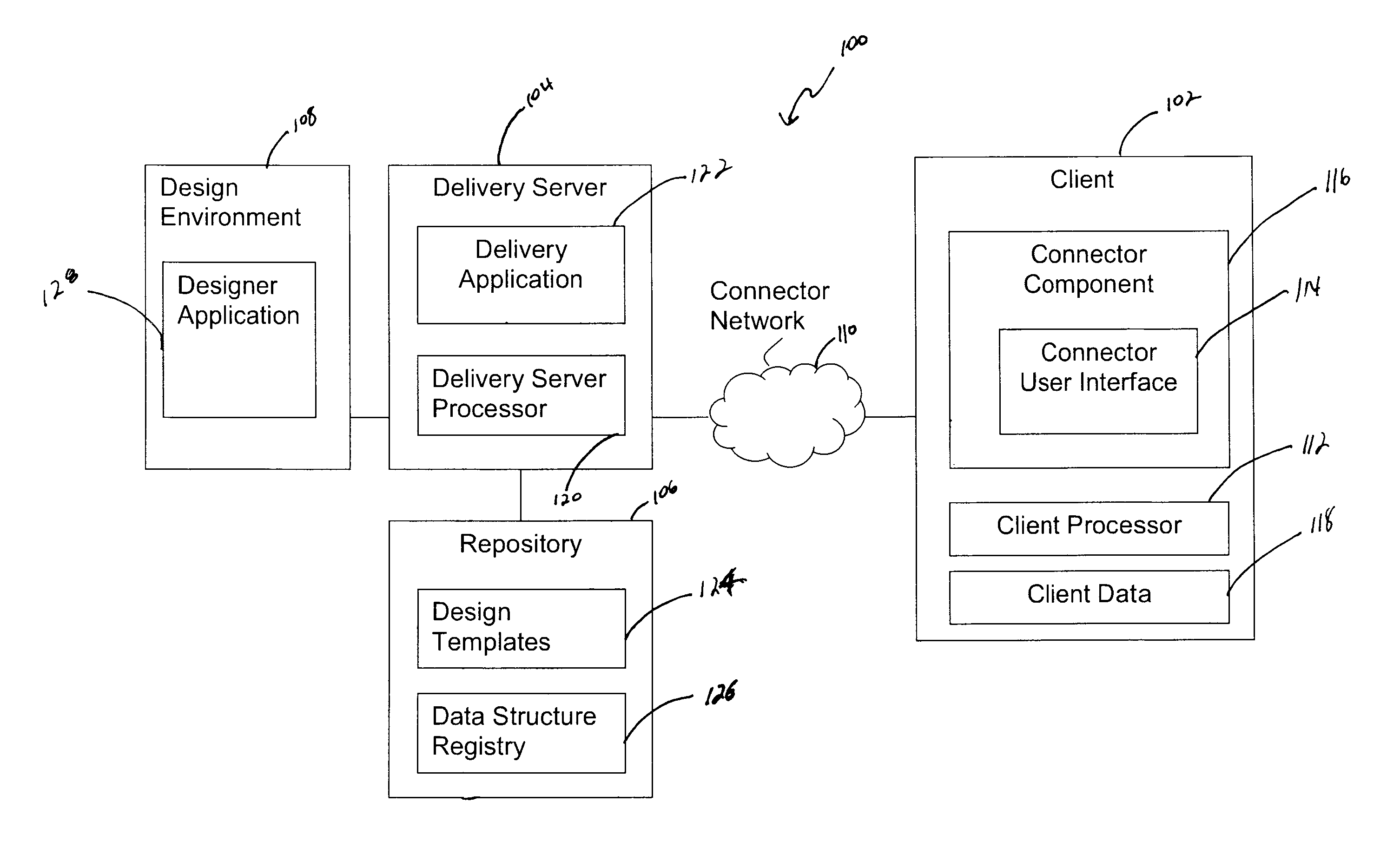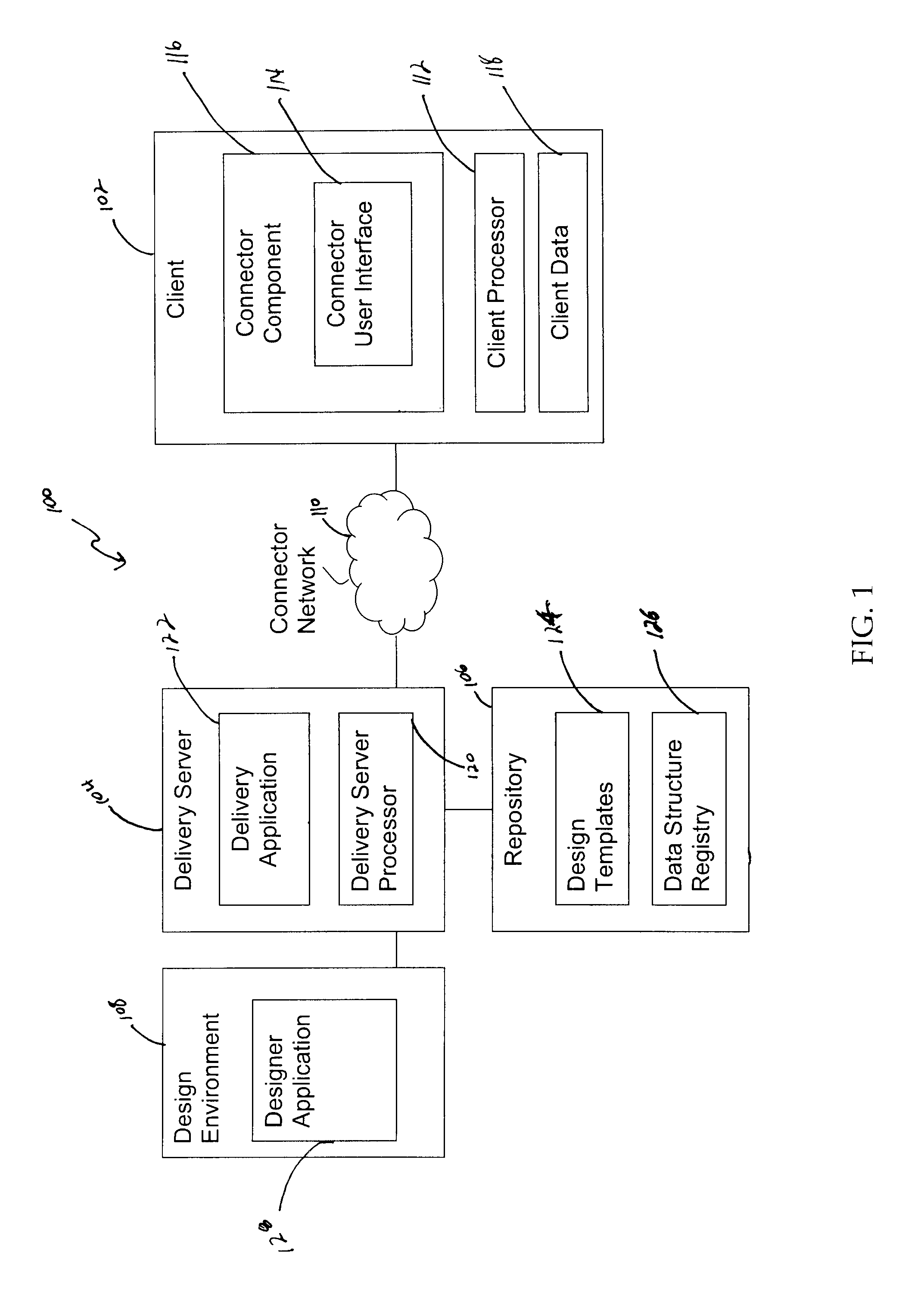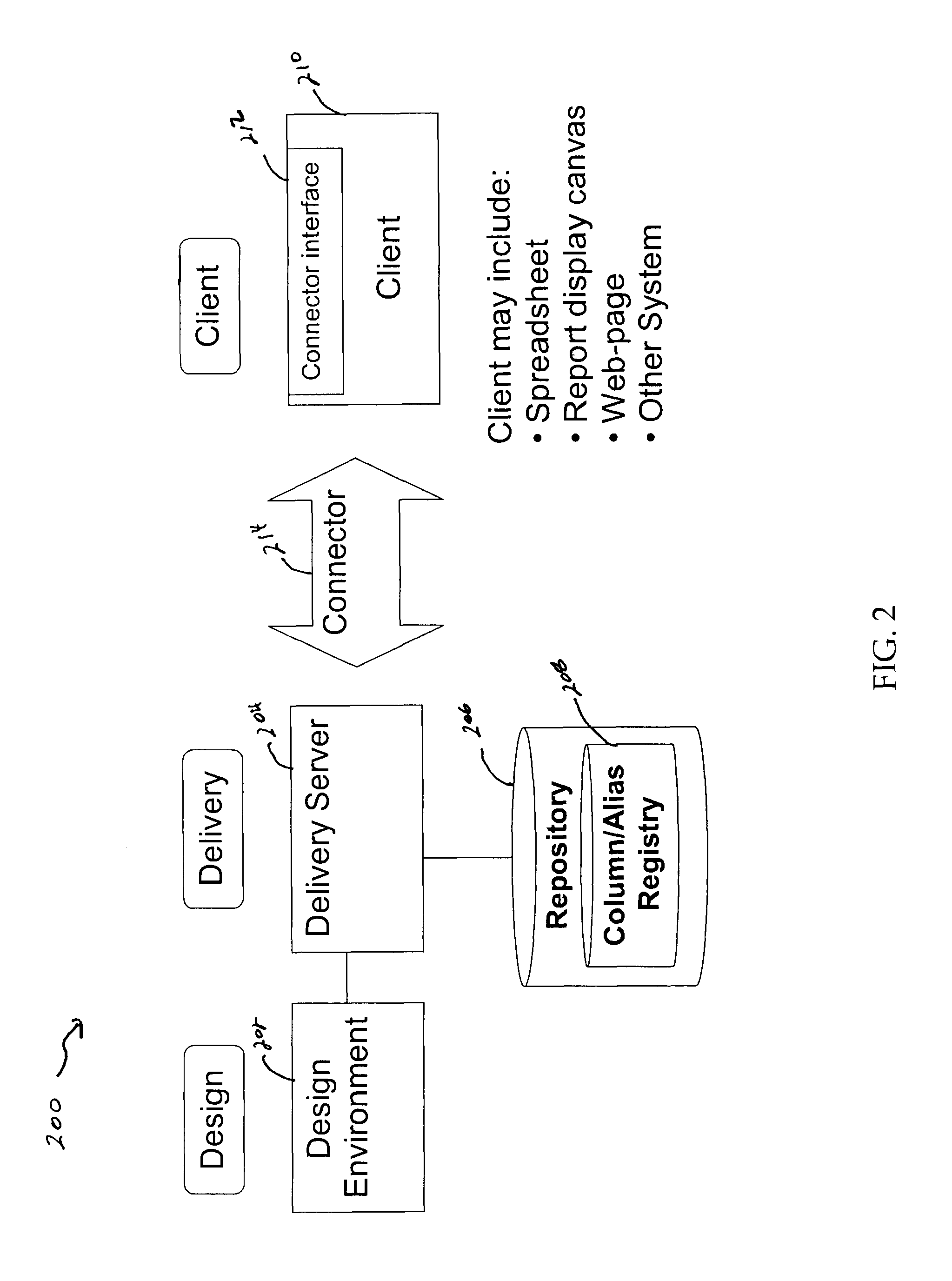Method and system for replacing data in a structured design template
a structured design and template technology, applied in the field of design templates, can solve the problems of inability to render data using structured design templates, high cost, and difficulty in perfecting, and achieve the effect of reducing the cost of data rendering
- Summary
- Abstract
- Description
- Claims
- Application Information
AI Technical Summary
Benefits of technology
Problems solved by technology
Method used
Image
Examples
Embodiment Construction
[0050]Reference will now be made in detail to embodiments of the present invention, examples of which are illustrated in the accompanying drawings, wherein like reference numerals refer to the like elements throughout. The embodiments are described below to explain the present invention by referring to the figures.
[0051]As used herein, the terms “a”, “an” and “the” may refer to one or more than one of an item. The terms “and” and “or” may be used in the conjunctive or disjunctive and will generally be understood to be equivalent to “and / or”.
[0052]In overview, an embodiment of the invention may relate to a method and system for replacing data in a design template. An embodiment of the invention may support a methodology for matching arbitrary structured data to a structured template and showing data within it. An end-user may provide a client data set to be adapted to a design template (e.g., a map or report). The data set may be structured data that may be dynamic; that is, the clie...
PUM
 Login to View More
Login to View More Abstract
Description
Claims
Application Information
 Login to View More
Login to View More - R&D
- Intellectual Property
- Life Sciences
- Materials
- Tech Scout
- Unparalleled Data Quality
- Higher Quality Content
- 60% Fewer Hallucinations
Browse by: Latest US Patents, China's latest patents, Technical Efficacy Thesaurus, Application Domain, Technology Topic, Popular Technical Reports.
© 2025 PatSnap. All rights reserved.Legal|Privacy policy|Modern Slavery Act Transparency Statement|Sitemap|About US| Contact US: help@patsnap.com



